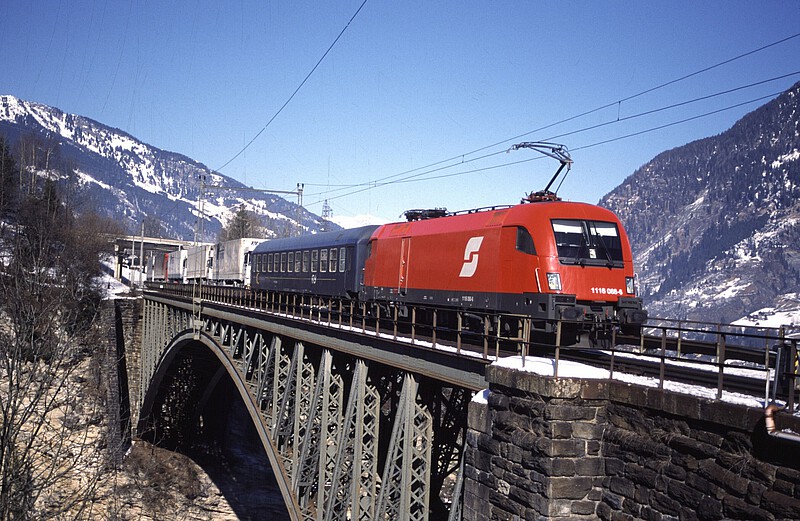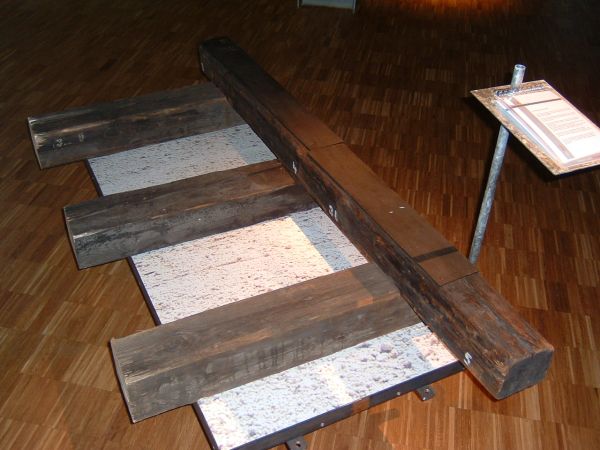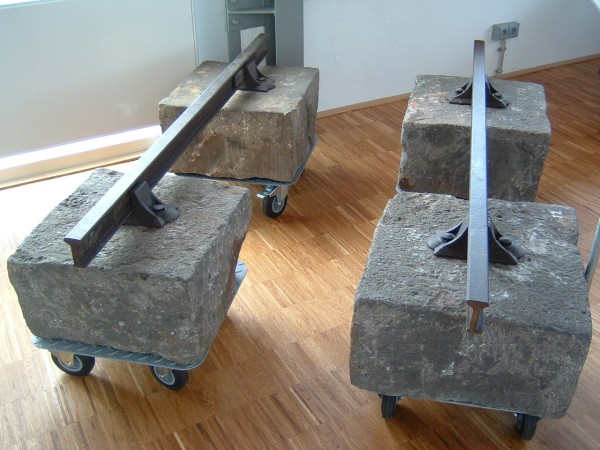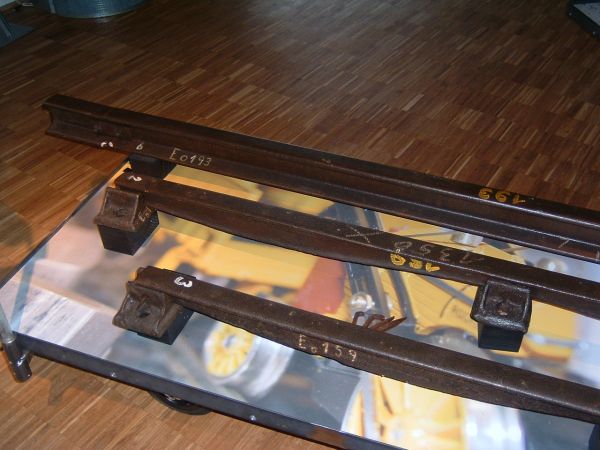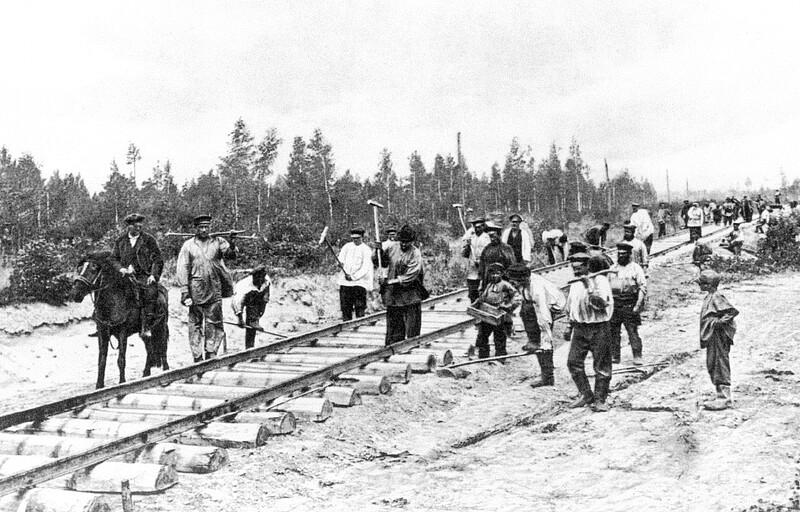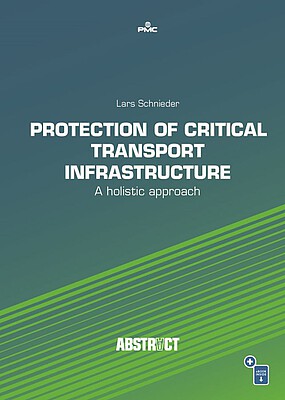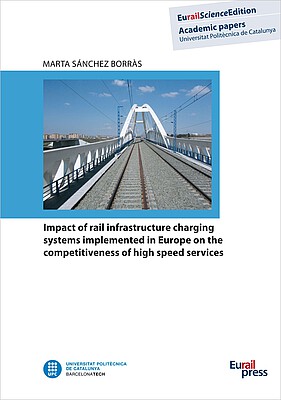Infrastructure and track
The term "track" describes the carriageway for rail-borne vehicles. Rails, sleepers, fasteners and the ballast bed together make up the trackbed. They are known as the term "permanent way". It is also important to think about the entire structure of a railway line, the so-called subgrade. Embankments, cuttings as well as bridges belong to the subgrade. The drainage of the subgrade must be properly designed in a way that a smooth traffic flow can be maintained regardless of the weather conditions.
Today's completed tracks are designed in a way that the weight of vehicles (axle load), the acceleration and the starting and braking forces can be withstood. Extreme temperatures no longer cause major damage to the track. So, the winter with severe minus temperatures or summer temperatures of over 30°C no longer present a risk for the permanent way.
The technology of track laying has made enormous progress in the last 200 years. Originally the track was developed from horse and cart ruts that were depressions in the ground parallel to one another. In Roman times and even in the Middle Ages, it used to be said that tracks cut in the rock as ruts enabled vehicles to travel safely on the road. At this time there were already switch-like points to enable horse drawn carts to change direction. These were the forerunners of what we now call turnouts. The vehicles (tippers, dump trucks, etc.), which until about 100 years ago worked in the mines, ran on wooden beams and these were the real beginnings of rail transport routes of today.
Workers used bars of pig iron to form the track for mine cars to run on as early as 1765. They were indeed suitable but suffered from heavy wear under high load. However, they did allow vehicle movements. These iron bars were built into a track and it was soon noticed that the vehicles rolled better, faster and easier than on a wooden surface.
The first rail made of cast iron was produced around the year 1822. It consisted of a head and a web, but had no rail foot. Stone cubes spaced approximately 1000 mm apart were used as support for rails of the permanent way of that time. This formed the track on which rail vehicles ran.
This type of track was first developed in England. The one-sided flange for vehicle wheels was developed using this head-web rail (12 kg/m and 4.38 m long), so that derailments would no longer be possible. The basic division between rail and road vehicles was brought about by this. In a further development the so-called fish-belly rail was designed and this was installed in 1824 on the first railway in the world in England on the route from Stockton to Darlington in 1824.
During the construction of the first railway in America in 1830 the first broad foot rail was used, laid on and nailed to long wooden sleepers. The shape of the rail was later (1835 - 1839) designed in a self-supporting way and the rails were laid on transverse wooden sleepers during the construction of the Leipzig - Dresden line. Thus, the final form of the German superstructure was born.
The first railway in Germany was opened on 7th December 1835 on the line Nuremberg - Fürth. There the so-called "Eagle" became the first German railway. The permanent way of the "Eagle" was called a frame track which is a term that is still used today. It consisted of two rails and at least 2 sleepers. The rails were laid parallelly in a ballast bed and had a standard gauge of 1435 mm. This gauge has been retained and is still used today. In some countries, including Germany, broader and narrower track gauges have been used experimentally. To this day there are still some railways that do not use the standard gauge.
With the commissioning of the first railway lines around 1825, the job of track laying was created. It took over the task of repairing damage caused to the track by rail vehicles. A new profession was born, railway civil engineer or track maintenance worker. The job specification today covers, besides the changing of all parts, the expertise of all types of track surveying. At speeds of over 300 km/h the track must be laid accurate to a millimetre in order to ensure the safety of the passengers.
You can find suitable specialist literature about the topic here:
Protection of Critical Transport Infrastructure
Transport infrastructure plays a vital role in our society. Deliberate harmful actions intended to damage or interrupt the use and operation of transport infrastructure can affect negatively the pursuit of economic activities, generate substantial financial losses, undermine user confidence and cause major damage to the economy.
This book answers the question of what is meant by critical transport infrastructure. Network and information systems are essential for its effective control. That is why these systems in particular need to be protected against unauthorised access. The motivation of companies and organisations to secure the critical transport infrastructure which they operate is based on a uniform legal framework imposed within the European Union.
Impact of rail infrastructure charging systems
According to the results obtained, current levels of rail infrastructure charges implemented in Europe have a negative impact on the competitiveness of the high speed passenger services that run on the European railway network, particularly in the cases where the rail market share is currently low (below 80-85%). Thus, mark ups would not have been imposed after careful consideration of their consequences on the market position of railway undertakings in the market segment in question.

